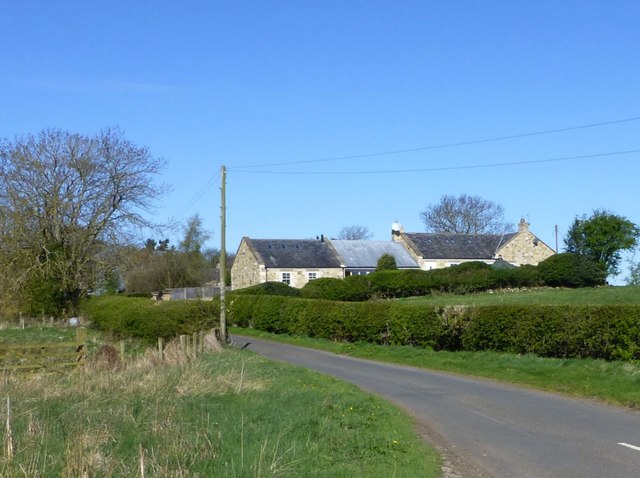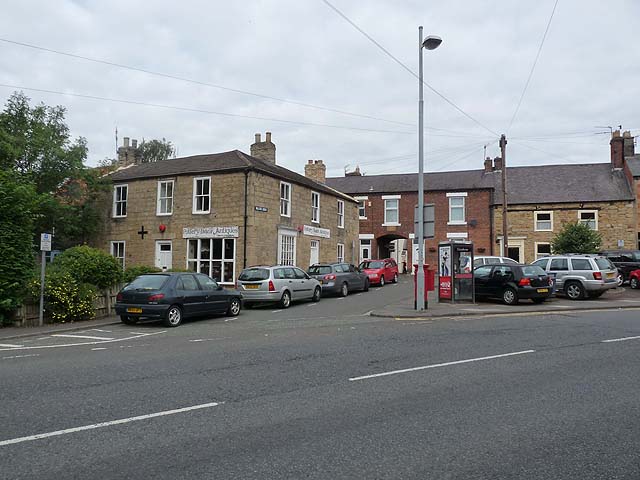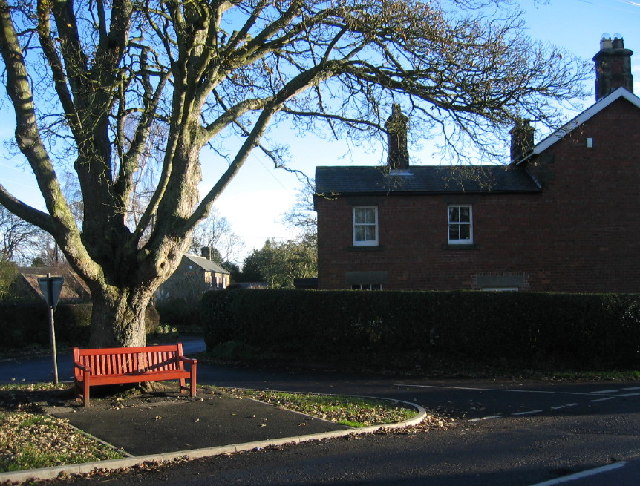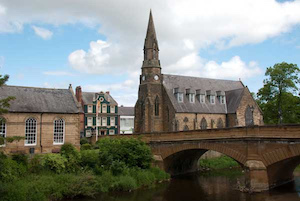Topics > Northumberland > Morpeth > Morpeth, Historical Account, 1848
Morpeth, Historical Account, 1848
MORPETH (St. Mary), a parish, a borough, and the head of a union, partly in the E. and partly in the W. division of Castle ward, S. division, and partly in the W. division of Morpeth ward, N. division, of Northumberland; containing 4,415 inhabitants, of whom 3,441 are in the town, 15 miles (N.) from Newcastle-upon-Tyne, and 289 (N.) from London. This town is supposed to derive its name from Mor-path, or "the road past the small hills, or Mors," so called in the north. The first certain account preserved of it, is in the grant by the Conqueror of the manor to one of his followers, William de Merlay, whose son Ranulph added largely to his paternal estates by his marriage with Julian, daughter of Cospatrick, Earl of Dunbar; ultimately the family became one of the most powerful in the north of England, and were owners of about a fourth of the county of Northumberland. In 1266, their possessions were vested in two coheiresses, Mary and Isabel, to the elder of whom, wife of William, Baron of Greystock, the manor of Morpeth was allotted. In 1483, it came to Elizabeth, Baroness Greystock and Wemm, who intermarried with Thomas, Lord Dacre, of Gilsland, distinguished as Lord Dacre of the North, from whom it passed to his son and grandson; and the latter dying in 1566, it once more became vested in two coheiresses. These were, Anne, who married Philip Howard, Earl of Arundel, and Elizabeth, who married Lord William Howard, third son of the Duke of Norfolk; the manor fell to the share of the latter nobleman, and is now the property of his lineal descendant, the present Earl of Carlisle. In 1215, the town was set on fire by the barons, in order to obstruct the military operations of King John; in 1689 it was nearly destroyed by an accidental conflagration.
Morpeth is agreeably situated in a valley on the northern bank of the river Wansbeck, on the great road from London to Edinburgh; it is in a richly-cultivated district, and in the midst of beautiful and romantic scenery. The river is crossed at the east end of the town by an elegant bridge of three arches, from a design by Mr. Telford, erected in 1831 a little below the old bridge, which was an inconvenient structure of two arches, one of them built about the time of the Conquest, the other at a later period, both being improvements upon the original wooden bridge. The town consists chiefly of one long street, paved, and lighted with gas, by the corporation, out of the borough funds; and an abundant supply of water is obtained from a spring at Stobhill: the houses are of an inferior description. Races are held in September, on Cottingwood. A subscription library was established in 1817, and in 1825 a mechanics' and scientific institute was founded. Little trade is carried on: the principal business is tanning, the ancient staple trade. Here is a station of the Newcastle and Berwick railway. The market-cross, built in 1699, and rebuilt in 1783 at the expense of the corporation, stands in the centre of the town, and is a small edifice, supported by eight stone pillars and arches. Near the market-place is a square tower of freestone, called the Clock-House, which contains a clock and a peal of bells; and there were formerly gates at the several entrances to the town. The market, granted by King John in 1199, is on Wednesday; it is one of the principal markets in the north of England for live cattle, and is generally well supplied with corn and provisions. Fairs are held on Wednesday-week before Whitsuntide, and the Wednesday before July 22nd, for sheep and cattle; two fairs for horses have been lately established, and there is a statute-fair for hiring servants on the Wednesday before Martinmas-day.
Morpeth, an ancient borough by prescription, received a charter of confirmation from Charles II.; but the government is now vested in a mayor, four aldermen, and twelve councillors, agreeably with the provisions of the act of the 5th and 6th of William IV., cap. 76. The mayor and late mayor are justices of the peace, having concurrent jurisdiction with the county magistrates. There were formerly seven aldermen, one belonging to each of seven companies; also two descriptions of burgesses, freemen and brothers, the former being entitled to superior privileges, as voting for members of parliament, and filling corporate offices. The freemen were appointed by the seven companies, who elected from among their own free brothers, the full number of twenty-four; viz., the Merchant Tailors four, the Tanners six, the Fullers and Dyers three, the Smiths three, the Cordwainers three, the Weavers three, and the Butchers two; the whole being sworn and admitted freemen at the ensuing court leet, after which the companies elected twenty-four more. The free brothers became, and are now, such by servitude, or by being sons of freemen, the brothers of some particular company. The companies were trading and benefit societies, sanctioned by many religious observances. They had one common fund for the purchase of materials, which were divided among the several members to be manufactured: bye-laws regulated their trade, punished fraud, and inflicted penalties; their fines were either money or wax, which was rendered to some shrine in the parish church. Each company had its feast day, and the members were supported in sickness. The annual revenue of the corporation, before the passing of the Municipal act, was £300; it is now upwards of £700. On the south side of the town are about 400 acres of common land, the property of the corporation, on part of which each of the freemen and free brothers is entitled to turn two head of cattle. The borough first returned representatives to parliament in 1553, and continued to send two members until the 2nd of William IV., when it was deprived of one by the act then passed to amend the representation, and the boundaries were enlarged: the mayor is returning officer. The county magistrates preside at a petty-session on the first Wednesday in every month, for county business; the borough justices hold monthly sessions; and the Easter quarter-sessions for the county take place here. The powers of the county debt-court of Morpeth, established in 1847, extend over the registration-district of Morpeth. The town-hall is a plain structure of hewn stone, with a piazza and turrets, erected in 1714, by Sir John Vanbrugh, at the expense of the family of Howard. The castle at Morpeth was formerly used as the prison for Northumberland; and afterwards a tower in Bridgestreet, adapted for a gaol, was sold by Lord Carlisle to the county, when it was extensively repaired and enlarged. In 1824 a new prison and court-house were erected on the south side of the river. They form an octagonal outline inclosing three acres; the dwellinghouses of the governor and other officers are in the centre, and are surrounded by the cells and airing-yards, which are built of stone, vaulted, and groined. A grand staircase leads to the sessions-house, an heptagonal semicircular building, the internal arrangements of which are very convenient.
The parish includes the townships of Buller's-Green, Hepscott, Newminster-Abbey, Shilvington, Tranwell with High Church, and Twizell. It comprises 7,430 acres, the soil of which varies much in quality; in the vale of the Wansbeck it is light, and suitable for the growth of turnips and barley, while the higher grounds are stronger, some of them poor, and others fruitful. The living is a rectory, with the perpetual curacy of Ulgham annexed, valued in the king's books at £32. 16. 8., and in the patronage of the Earl of Carlisle, with a net income, exclusively of glebe land, of £1,475. The church is situated upon an eminence called Kirk Hill, at a considerable distance from the town, and is a plain structure in the early English style, with a low tower; in the chancel is a fine window, which was formerly of painted glass throughout. On the north of the bridge is a small chapel of ease, built of freestone, now in a ruinous state and disused. A new church, called St. James' the Great, was consecrated in October 1846; it stands in the centre of the town, on a site given by the Earl of Carlisle, and is a substantial edifice in the Norman style, 130 feet long, and containing 1,000 sittings: the cost of erection was £5,000. There are places of worship for Independents, Presbyterians, Wesleyan Methodists, and Roman Catholics.
At a remote period the chantry of All Saints and the chapel of St. Mary were founded here, having the bridge over the Wansbeck attached to them as a source of revenue, and it was the duty of the chaplain to instruct in a school the children of the burgesses; but the institution was swept away at the Reformation. In 1552 Edward VI. restored the free grammar school, and endowed it with the lands of this and some other dissolved chantries, the rental of which amounts to £220 per annum; the master, who must be of the degree of M.A. or B.A., and the usher, are both appointed by trustees, in whom the management is vested, subject to the approval of the Bishop of Durham. The institution was lately divided into two departments, one for classical instruction, and the other for English and mathematics on the system of the British and Foreign School Society. The corporation have established, and entirely support, an infants' school and a girls' school. The poor-law union of Morpeth comprises 72 parishes or places, of which 71 are in the county of Northumberland, and one in that of Durham; the whole containing a population of 14,995.
The ancient baronial castle was in existence during the Saxon heptarchy; it was strengthened by Ranulph de Merlay, and demolished by the parliamentary army in the time of the commonwealth. The remains consist of the gateway, having two exploratory turrets, built in 1358, together with the outer wall. Near the gateway, towards the north, but separated from it by a moat with a drawbridge, is a large mound of earth on a natural elevation; here have been found an ancient cairn, or tumulus, and some ruins of Norman architecture. In former times the elevation was, doubtless, the aula, or place in which the lords of Morpeth held their courts in the open air; it may have been afterwards converted into a defence for the castle, or an enemy may have used it for a malvoisin. At the distance of a quarter of a mile to the west of the town, are the ruins of Newminster Abbey, of which an account will be found under the article Newminster. William Turner, M.D., the first English writer on botany, who died in 1568; and the late Dr. Robert Morrison, the celebrated Chiness linguist and missionary, and author of a Chinese dictionary, were natives of the place: John Horsley, author of the Britannia Romana, was for some time minister of the Presbyterian chapel, in the parish, where he died in 1731. Morpeth gives the title of Viscount to the family of Howard, earls of Carlisle.
Extract from: A Topographical Dictionary of England comprising the several counties, cities, boroughs, corporate and market towns, parishes, and townships..... 7th Edition, by Samuel Lewis, London, 1848.

Co-Curate Page
Tranwell with High Church, Township, 1848
- TRANWELL, with High Church, a township, in the parish and union of Morpeth, W. division of Castle ward, S. division of Northumberland, 2 miles (S.S.W.) from Morpeth; containing 55 inhabitants. …

Co-Curate Page
Shilvington
- Overview Map Street View Shilvington is a hamlet in Northumberland, located by Shilvington Burn, about 4 miles south-west of Morpeth. This was the site of a larger village in medieval …

Co-Curate Page
Bullers Green
- In the 19th century Bullers Green was recorded as a township, located just ouside Morpeth, but has since been subsumed into the town as it grew in size. BULLER'S-GREEN, a …

Co-Curate Page
Ulgham, 1848
- ULGHAM, a parochial chapelry, in the union, and E. division of the ward, of Morpeth, N. division of Northumberland, 5 miles (N.E. by N.) from Morpeth; containing 368 inhabitants. This …

Co-Curate Page
Twizell Township (Morpeth Parish), 1848
- TWIZELL, a township, in the parish of Morpeth, union and W. division of Castle ward, S. division of Northumberland, 6¼ miles (S.W. by S.) from Morpeth; containing 45 inhabitants. The …

Co-Curate Page
Hepscott
- Overview About Hepscott Map Street View Hepscott is a village in Northumberland located to the south of Morpeth. Historically Hepscott was a township in the ancient parish of Morpeth. Today …


Co-Curate Page
Tranwell with High Church, Township, 1848
- TRANWELL, with High Church, a township, in the parish and union of Morpeth, W. division of Castle ward, S. division of Northumberland, 2 miles (S.S.W.) from Morpeth; containing 55 inhabitants. …

Co-Curate Page
Shilvington
- Overview Map Street View Shilvington is a hamlet in Northumberland, located by Shilvington Burn, about 4 miles south-west of Morpeth. This was the site of a larger village in medieval …

Co-Curate Page
Bullers Green
- In the 19th century Bullers Green was recorded as a township, located just ouside Morpeth, but has since been subsumed into the town as it grew in size. BULLER'S-GREEN, a …

Co-Curate Page
Ulgham, 1848
- ULGHAM, a parochial chapelry, in the union, and E. division of the ward, of Morpeth, N. division of Northumberland, 5 miles (N.E. by N.) from Morpeth; containing 368 inhabitants. This …

Co-Curate Page
Twizell Township (Morpeth Parish), 1848
- TWIZELL, a township, in the parish of Morpeth, union and W. division of Castle ward, S. division of Northumberland, 6¼ miles (S.W. by S.) from Morpeth; containing 45 inhabitants. The …







